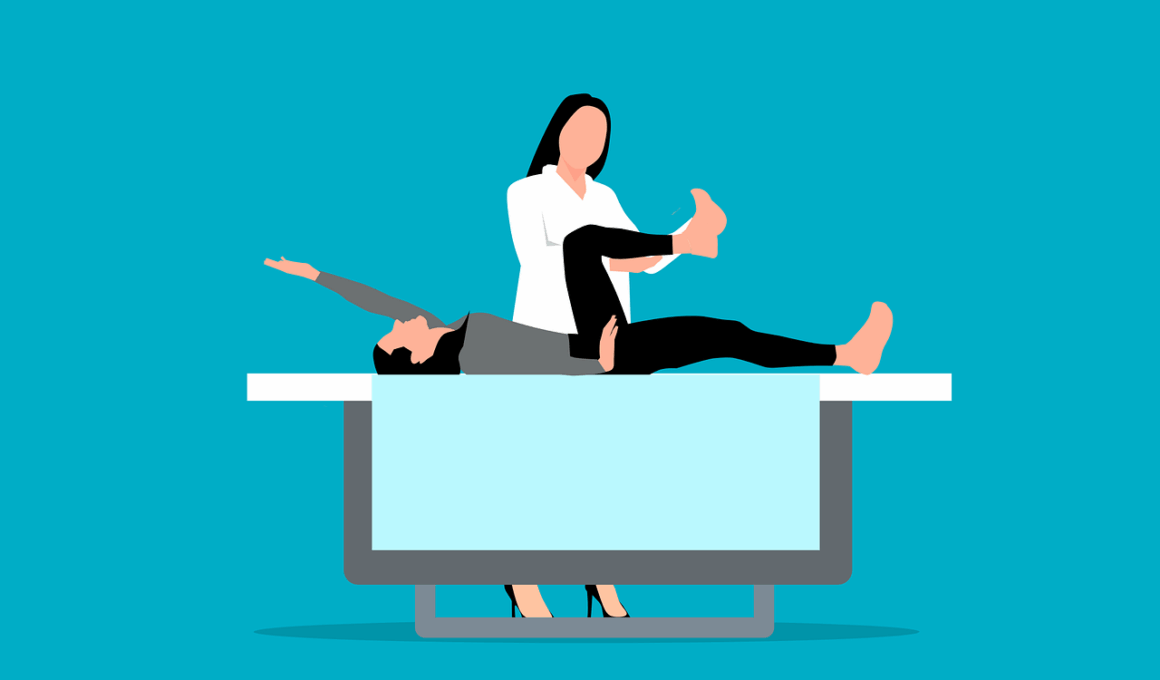How Pilates Enhances Rehabilitation Outcomes
Pilates is increasingly recognized as a beneficial form of exercise in rehabilitation settings. Developed in the early 20th century, Pilates focuses on controlled movements and breath. The methodology aids individuals recovering from injuries by enhancing core strength, flexibility, and postural awareness. This holistic approach is excellent for individuals with low back pain, joint issues, or post-surgery rehabilitation needs. By employing specific exercises, Pilates practitioners can help facilitate the healing process efficiently. Moreover, Pilates is adaptable for various fitness levels, which means it can be modified according to individual capabilities. Throughout recovery, therapists encourage participants to engage mindfully with their bodies. This, in turn, fosters a deeper connection to have awareness of movement patterns. Essential components of Pilates include stability, balance, and strength, which are crucial during rehabilitation. Additionally, incorporating mindful breathing techniques encourages relaxation while mitigating pain. As participants progress, they often experience increased confidence and motivation. Thus, Pilates not only helps recover physically but also contributes to a positive mental outlook during rehabilitation. Implementing a structured and individualized Pilates program can yield significant benefits for those in recovery.
The focus of Pilates is primarily on core engagement, which strengthens abdominal and back muscles. This is particularly beneficial for rehabilitation after injury. A strong core is essential for stability and overall body control. Many rehabilitation protocols emphasize the importance of core strength to prevent future injuries. Additionally, Pilates emphasizes proper alignment, encouraging correct posture throughout exercises. This focus on alignment helps clients avoid compensatory movements that could lead to further injury. Moreover, the precision of Pilates exercises can gradually build mobility and improve joint function, which is often compromised due to inactivity or injury. As individuals advance in their Pilates practice, they can safely introduce more challenging exercises. The therapeutic benefits extend beyond the physical as Pilates promotes relaxation and mental clarity. Physiotherapists often incorporate Pilates into their programs for patients due to its evidence-based approach. A variety of Pilates equipment, such as reformers and stability balls, enhances the exercise experience. Clients benefit from diverse workout modalities that keep them engaged. With careful progression and attention to individual needs, Pilates can play a crucial role in successful rehabilitation outcomes.
Specific Conditions Benefited by Pilates
Pilates has demonstrated effectiveness for a variety of conditions requiring rehabilitation. One primary focus is on individuals experiencing chronic lower back pain. Research shows that regular Pilates practice can help alleviate pain and improve functional ability. Additionally, those recovering from surgery, particularly orthopedic operations involving hips and knees, can benefit from a tailored Pilates program. The emphasis on controlled movement enables individuals to regain strength without overstressing healing tissues. Another area where Pilates shines is post-stroke rehabilitation. Clinical evidence suggests that Pilates exercises enhance mobility and balance for stroke survivors. These improvements often translate into increased independence and overall quality of life. Furthermore, Pilates is beneficial for athletes recovering from sports injuries, helping to restore muscular balance and flexibility. This can minimize the risk of recurrent injuries by focusing on proper movement mechanics and alignment. By emphasizing each client’s rehabilitation needs, instructors can customize programs accordingly. Clients also appreciate the supportive environment experienced during Pilates classes, which fosters motivation. The collaborative effort between instructors and participants leads to a holistic approach benefiting various rehabilitation conditions.
The role of Pilates in enhancing proprioception is vital for effective rehabilitation. Proprioception, or body awareness, is crucial for balance and coordination. Pilates exercises focus on control, requiring individuals to develop a stronger sense of their body’s positioning in space. This can significantly help clients recovering from injuries or surgeries. Improved proprioception enhances an individual’s ability to move safely and confidently. By concentrating on specific movement patterns, students learn to identify and correct postural misalignments. This understanding further fortifies the body’s natural instincts to move correctly. As clients continue their practice, they develop the ability to incorporate these principles into daily life. Moreover, increased body awareness can significantly improve athletic performance as individuals regain their pre-injury confidence. The mental component of Pilates exercises encourages mindfulness, which can empower clients to focus on their rehabilitation journey. Instructors play an indispensable role in this learning process, guiding individuals toward optimal alignment and biomechanics. The supportive environment within Pilates classes fosters a sense of community and determination. Ultimately, incorporating proprioceptive training into rehabilitation programs through Pilates is an effective strategy for improving overall outcomes.
Strengthening Mental Resilience through Pilates
Another remarkable aspect of Pilates is its ability to enhance mental resilience during rehabilitation. Recovery from injury can become emotionally challenging, and patients often face feelings of frustration or helplessness. Pilates provides a structured outlet for these feelings by promoting empowerment through movement. Participants learn to set attainable goals, fostering a sense of accomplishment. Each session offers a chance to improve both physical and mental strength, helping individuals overcome barriers and setbacks. Moreover, practicing mindfulness during Pilates helps clients become more attuned to their thoughts and emotions. This self-awareness can significantly improve coping mechanisms and lessen anxiety around recovery. Studies show that individuals engaged in regular Pilates practice report increased positive mood and decreased levels of depression. As a result, participants often find a renewed sense of motivation to adhere to their rehabilitation plans. The emphasis on breathing techniques also plays a role in alleviating stress, allowing for a holistic approach to healing. Both physical and emotional health are intertwined; thus, fostering mental resilience is paramount in successful rehabilitation outcomes. Emphasizing this mental aspect becomes instrumental in achieving long-term recovery goals.
In summary, Pilates proves to be a valuable tool for enhancing rehabilitation outcomes across various physical conditions. The unique blend of strength training, flexibility, and body awareness facilitates recovery from injury. This approach not only strengthens muscles but also promotes proper biomechanics and posture. As individuals progress in their Pilates journey, they often notice improvements in overall mobility and well-being. Customized programs tailored to meet each person’s specific needs accelerate healing processes effectively. Additionally, Pilates cultivates a supportive community where participants practice together, share experiences, and encourage one another’s progress. Educators in Pilates focus on creating a safe environment that fosters trust and connection. With direct guidance, clients adapt exercises at their pace, understanding the importance of listening to their bodies. Future studies and the rising popularity of Pilates in rehabilitation settings underscore its effectiveness. Therefore, healthcare providers should consider incorporating Pilates into comprehensive rehabilitation programs. By acknowledging both the physical and mental benefits of Pilates, practitioners can offer a well-rounded solution for patients. In conclusion, Pilates serves as a bridge to recovery, artfully uniting the body and mind for enhanced rehabilitation.
Ultimately, solutions for improved rehabilitation outcomes will continue evolving. Pilates offers an innovative approach rooted in respect for the body, emphasizing balance and resilience. This method not only helps participants recover but thrives on building lifelong skills essential for injury prevention. Current trends suggest that clients who engage in Pilates maintain their functional ability longer than those who do not. As more evidence-validating Pilates emerges, healthcare professionals are encouraged to explore its efficacy further. In a world where exercise plays a defining role in health, Pilates stands as a powerful ally in recovery. As individuals commit to regular practice, they develop attributes beneficial both during and after rehabilitation. Thus, the importance of holistic practices like Pilates becomes central to contemporary approaches in physical therapy. Exploring the interplay between physical capabilities and mental strength contributes to a comprehensive understanding of rehabilitation. Future research will undoubtedly expand on these promising findings. Advocating for the integration of Pilates into mainstream rehabilitation shows the potential to transform lives positively. Combining scientific knowledge with practical experience will yield beneficial results for individuals seeking recovery through comprehensive, mindful approaches.


